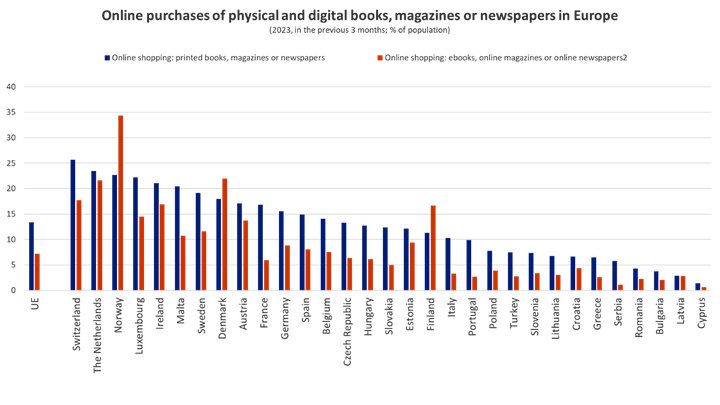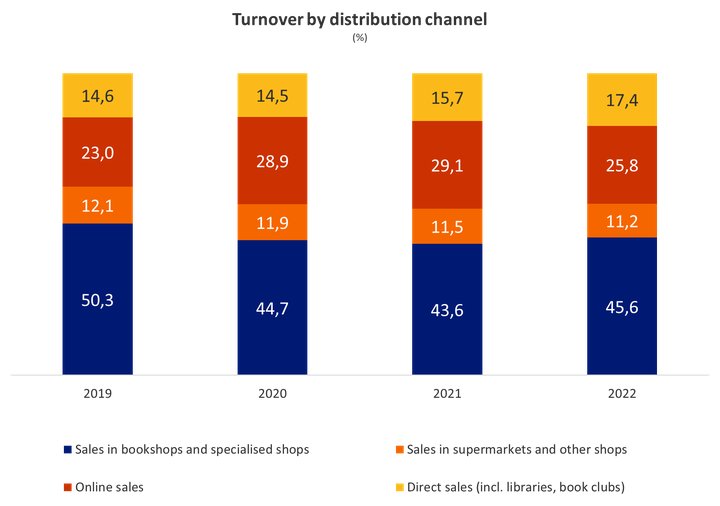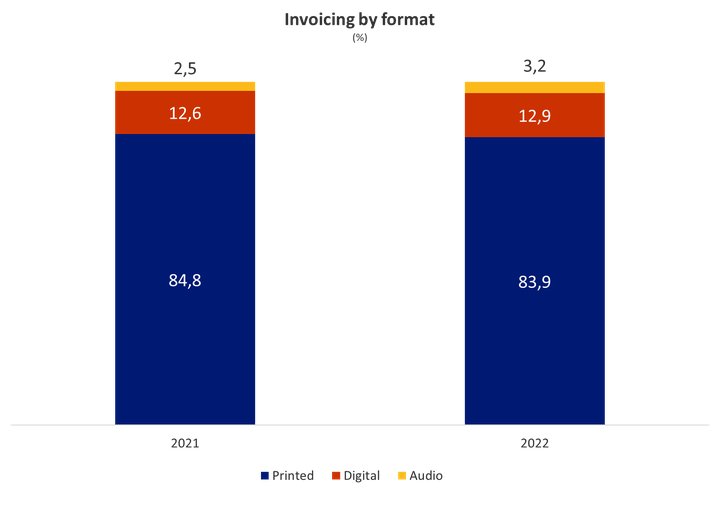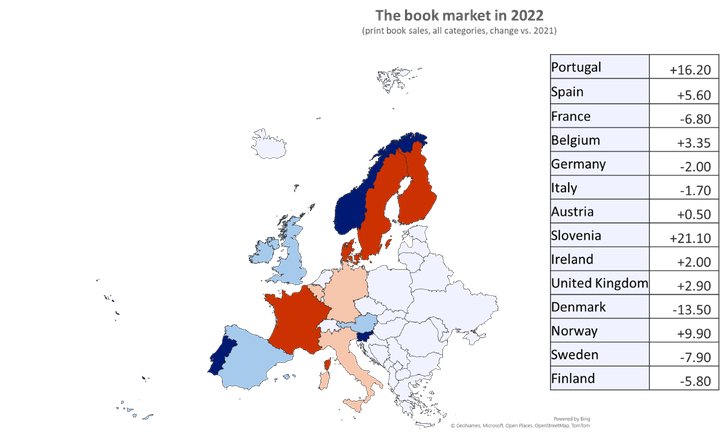The e-commerce book market in Europe: physical books resist and adapt to the digital age

During the back-to-school period, the e-commerce market is becoming a key player in the purchase of school materials, mainly textbooks. This phenomenon is gaining ground across Europe, prompting thoughts about the future of the publishing sector and its impact on the education of new generations.
In Europe, e-commerce sales of books reached 10 billion euros in 2023, according to the Federation of European Publishers (FEP); a growing market in which different formats coexist from: physical books, ebooks, and more recently, audiobooks.
Currently there are two business models that coexist from: one-off consumption or subscriptions to platforms that offer unlimited content for a monthly fee.
During 2023, in Europe, 13% of the population bought printed books, magazines or newspapers online, while 7% opted for online purchases of e-books, online-magazines, and online-newspapers.

Online purchases of physical and digital books, magazines or newspapers in Europe | Source: Eurostat
According to the association, the net revenues of European publishers in 2022 reached 23.9 billion euros (38 billion euros considering the retail price), which represents a growth of 1.3% and a return to the record figures recorded by the sector in 2007, before the emergence of social networks and the financial crisis of 2008. This means 2.5 billion books have been consumed in 2022, combining all formats (online, print, and audio).

What type of books are we buying across Europe? 50.5% of sales (i.e. just over 2.5 billion books and close to 20 billion euros) are consumer books, 18% are textbooks, 16.8% are academic or professional books and 14.7% are children's books.
E-commerce logistics in the 'books' category
According to data from the European Publishers Federation, the number of books sold online in the EU in 2022 reached 482 million units, which will significantly impact the supply chain.
If we take the standard book size of 21 cm wide x 26 cm high x 6 cm thick, a book will occupy a volumetric space of 0.003276 cubic meters. If we multiply this figure by 482 million, you get 1,579,032 cubic meters, which is, equal to all the water that falls in Mexico in the form of precipitation during a year. To put it more graphically, it would be equivalent to filling 630 Olympic-size swimming pools with books that are 50 meters long, 25 meters wide and at least 2 meters deep.

In addition to the high demand for these products online, other complexities make the logistics process difficult. Eloy Mariaud, Director of E-commerce & Digital at Casa del Libro, one of the main players in Spain in the sale of books, points to the length of the catalog as a major complexity: “If we have a catalogue of two million books in Spain, we must have the largest number of references ready to ship and meet the promise date. The presence rate is therefore one of the indicators we take the most care of. In international shipments, logistics is complicated by shipping costs and delivery times,” he says.
In addition, although books are not entirely a seasonal product, and are consumed all year round, during the Christmas season the logistics chain tightens. Mariaud reminds us: “Christmas, Epiphany, bearing in mind that a book is one of the best gifts. It is considered to be a more personalised gift than any other; when someone gives you a book, it is because they know you and appreciate you,” he concludes.
A sector also affected by COVID
As with all other e-commerce categories, the “books” category experienced significant growth in 2020 and 2021, with a market share of 28.9% and 29.1%, respectively. That 'tailwind' was felt in 2022, where growth returned to pre-pandemic rates: in 2022, just over 1 in 4 books purchased in Europe (in any format) was online.

The book market in 2022 | Source: FEP
What format do we prefer to buy? The physical book is still undisputedly the king, despite the rise of e-readers and ebooks. In 2021, almost 85% of the sector's revenues went to physical books, a percentage that dropped to 83.9% in 2022.
An interesting note is the growth experienced by the audiobook format, which in the last fiscal year has increased almost 1%, from 2.3% to 3.1%.
With this growth, Mariaud points out an important fact. “The audiobook is a format that is growing in consumer acceptance. It’s a different way of having the information of a book. It’s used in special moments such as journeys. However, it does not replace normal reading, which can be other types of books”, so the growth of this format should therefore not lead to a fall in other ones.
Although today it can be said that in Europe paper books are mainly bought in bookstores and specialised physical stores, it is not clear how the market will evolve, as some countries are moving away from paper to ebooks, others are experiencing a boom in audiobooks, while in other markets it seems that the winning combination will be to buy printed books online.

The book market in 2022 | Source: FEP
Writing the future of book trade in Europe

The book market in 2022 | Source: FEP
The book trade in Europe remains a robust sector, with the physical book maintaining a dominant position despite digital advances. The adoption of new technologies, such as audiobooks and ebooks, is expanding the market and offering new ways to enjoy reading. However, the real challenge lies in finding a balance between different formats and business models, and how bookstores and specialty stores can integrate into an increasingly digital environment. With the right strategy, the e-commerce book market will not only survive, but thrive in the digital age.
